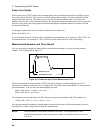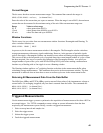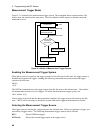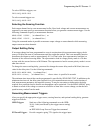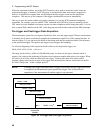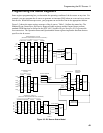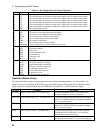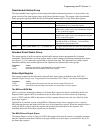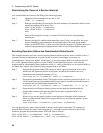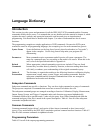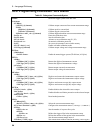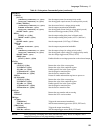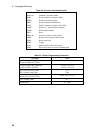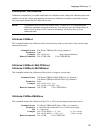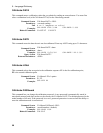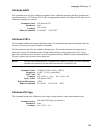5 - Programming the DC Source
52
Determining the Cause of a Service Interrupt
You can determine the reason for an SRQ by the following actions:
Step 1 Determine which summary bits are active. Use:
*STB? or serial poll
Step 2
Read the corresponding Event register for each summary bit to determine which events
caused the summary bit to be set. Use:
STAT:QUES:EVEN?
(@<channel list>)
STAT:OPER:EVEN? (@<channel list>)
ESR?
When an Event register is read, it is cleared. This also clears the corresponding
summary bit.
Step 3 Remove the specific condition that caused the event. If this is not possible, the event
may be disabled by programming the corresponding bit of the status group Enable
register or NTR|PTR filter. A faster way to prevent the interrupt is to disable the service
request by programming the appropriate bit of the Service Request Enable register.
Servicing Operation Status and Questionable Status Events
This example assumes you want a service request generated whenever the dc source switches to the CC
(constant current) operating mode, or whenever the dc source's overvoltage, overcurrent, or
overtemperature circuits have tripped. From figure 5-5, note the required path for a condition at bit 10
(CC) of the Operation Status register to set bit 6 (RQS) of the Status Byte register. Also note the
required path for Questionable Status conditions at bits 0, 1, and 4 to generate a service request (RQS) at
the Status Byte register. The required register programming is as follows:
Step 1 Program the Operation Status PTR register to allow a positive transition at bit 6 to be
latched into the Operation Status Event register, and allow the latched event to be
summed into the Operation summary bit. Use:
STAT:OPER:PTR 64,(@<channel list>);ENAB 64,(@<channel list>)
Step 2
Program the Questionable Status PTR register to allow a positive transition at bits 0, 1, or
4 to be latched into the Questionable Status Event register, and allow the latched event to
be summed into the Questionable summary bit. Use:
STAT:QUES:PTR 19,(@<channel list>);ENAB 19 ,(@<channel list>) (1 + 2 + 16 = 19)
Step 3
Program the Service Request Enable register to allow both the Operation and the
Questionable summary bits from the Status Byte register to generate RQS. Use:
*SRE 136 (8 + 128 = 136)
Step 4
When you service the request, read the event registers to determine which Operation
Status and Questionable Status Event register bits are set, and clear the registers for the
next event. Use:
STAT:OPER:EVEN? (@<channel list>);QUES:EVEN? (@<channel list>)
You can also monitor a status signal for both its positive and negative transitions. For example, to
generate RQS when the dc source either enters the CC+ (constant current) condition or leaves that
condition, program the Operational Status PTR/NTR filter as follows:
STAT:OPER:PTR 8,(@<channel list>);NTR 8,(@<channel list>)
STAT:OPER:ENAB 8,(@<channel list>);*SRE 128,(@<channel list>)



